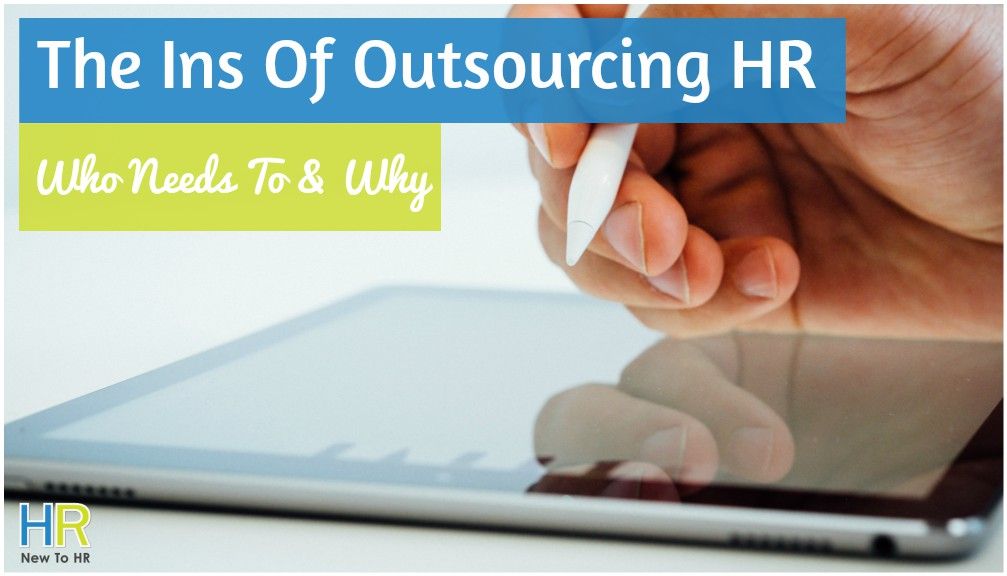
The Ins Of Outsourcing HR – Who Needs To And Why
If we’ve been doing our jobs well, even those newest to HR understand the importance of this field. HR does everything from talent acquisition to policy integration, influencing the direction of a business through its workforce and its values. People management teams must intimately understand a company’s needs and wants, so they can provide the best possible service and contribute to building the best possible business. Yet, more often and more successfully, businesses are choosing to outsource HR.
In truth, outsourcing people operations isn’t a bad decision. HR provides immense value to a business, performing an array of necessary services, but not all businesses have the budget to sustain an appropriately sized people management department. Therefore, outsourcing opportunities allow smaller businesses to benefit from people operations functions at a fraction of the cost. Still, it takes effort to make HR outsourcing work. The first step is learning all about the benefits, types, and processes of outsourcing.
Benefits of Outsourcing

As with any opportunity to outsource, the primary advantage of moving people operations outside the office is money. While people management personnel inarguably provide benefit to businesses, they don’t directly contribute to an organization’s profits, making each HR employee a back-office expense. Plus, a full HR team requires abundant office space and equipment to adequately perform, compounding the expenditure. Outsourced people management eliminates the office-related costs and drastically cut the costs of personnel, allowing smaller businesses access to a full suite of HR services.
Further, dedicated people operations firms are more adept at finding HR solutions and providing appropriate services. Outsourcing providers tend to have more access to advanced technology that improves efficiency and effectiveness of their clients’ workplaces; where an in-office HR department might devote excess time to completing paperwork or researching solutions, people management firms have likely already encountered most issues and have developed winning resolutions. Thus, small businesses can benefit from enhanced HR functionality without paying an exorbitant amount for a large, experienced in-house staff.
Types of HR Outsourcing
There is more than one way to outsource HR. In fact, there are at least three different solutions to ensure businesses of nearly every size and scope receive precisely the people management services they require. Here is a brief explanation of outsourcing provider options:
Software as a Service (SaaS)
Startups and other exceedingly small businesses can usually function with minimal people management, which is why they often turn to technology. SaaS is a software delivery model in which applications are hosted elsewhere and accessed by businesses through the web. Software solutions are typically limited to relatively simple and automated processes like talent acquisition and payroll.
Business-Process Outsourcing
If SaaS leaves a business wanting, one step up is business-process outsourcing (BPO). Some third-party providers offer only one specialized service that is difficult to automate with software. For example, a common BPO option is benefits administration, which is both complex and tedious. Businesses can outsource individual HR processes by using BPOs.
Professional Employer Organizations
For a comprehensive suite of HR services, businesses should look no further than professional employer organizations (PEOs). Through a co-employer relationship or employee leasing arrangement, PEOs share the responsibility for managing people by overseeing benefits, taxes, payroll, and other functions. Meanwhile, businesses maintain ownership of all work produced. PEO outsourcing has become increasingly popular, especially for small and medium-sized businesses.
Steps to Successful Outsourcing
No business decision should be made lightly, especially when it concerns an important field such as HR. To confirm that a business is taking the best possible steps with its people management endeavors, leaders should take the outsourcing process step-by-step:
Step 1: Identify crucial HR functions.
- In different businesses, HR has different roles. Business leaders must define the goals of people management within their organizations.
Step 2: Identify potential outsourceable functions.
- Payroll, benefits administration, compliance regulation, talent acquisition, relocation, and many other services require objective and consistent attention. Meanwhile, there are a few services, like employee relations and talent development, that might be best addressed by in-house personnel.
Step 3: Identify trustworthy partners.
- Not all people operations firms are created equal. Business leaders should evaluate services and costs as well as quality of customer service when considering HR partners.
Step 4: Mix and match solutions.
- Typically, it is untenable to expect one outsourcing option to satisfy all people management needs. Business leaders should consider maintaining a small in-house HR staff, acquiring SaaS, and using BPO or PEO services to provide an appropriate foundation for their workforce.
© New To HR


